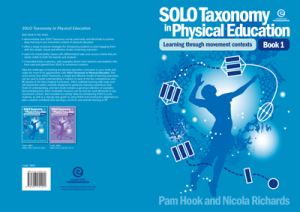It can be hard to remember your first learning experiences. At five I remember determinedly studying the points of difference between “was” and “saw” on small pieces of card when I was learning to read. I remember my teacher climbing onto the piano to staple a poster to the wall (and instead staple her fingers together) and I remember crossing the finish line – balancing a potato on a spoon –marginally ahead of the other 5 year old spoon-clutchers in Awali School, Bahrain.
The euphoria of the race, the blaze of glory at the finish, the ceremony and the over-sized medal ensure that the memory of what it takes to cross the finish line with (rather than without) the potato remains.
And it will not surprise those of you who work in education to learn that all these years later getting across the finish line with the potato remains a relevant goal.
You will undoubtedly remember something different – balancing a potato on a spoon is ‘old school’ – but it is likely your early memories of learning through movement contexts will involve participating in physical education in school.
What started with strategies for successfully running whilst balancing an “egg” on a spoon has ended in collaboration with St Andrew’s College teacher Nicola Richards – where we have used SOLO Taxonomy to tease out what it is to learn through movement contexts for a new series of Essential Resources books – SOLO Taxonomy in Physical Education Bk. 1 and 2.
The new books are fabulous. The Essential Resources flyer describes them well.

 This series shows how SOLO Taxonomy, a simple but effective model of learning outcomes, can be used to build understanding in relation to each of the key competencies and PE strands of the New Zealand Curriculum. SOLO scaffolds learning with maps and self assessment rubrics carefully designed for particular learning experiences and levels of understanding, and each book contains a generous selection of examples demonstrating how these invaluable resources can be and are used effectively in any movement context.
This series shows how SOLO Taxonomy, a simple but effective model of learning outcomes, can be used to build understanding in relation to each of the key competencies and PE strands of the New Zealand Curriculum. SOLO scaffolds learning with maps and self assessment rubrics carefully designed for particular learning experiences and levels of understanding, and each book contains a generous selection of examples demonstrating how these invaluable resources can be and are used effectively in any movement context.




